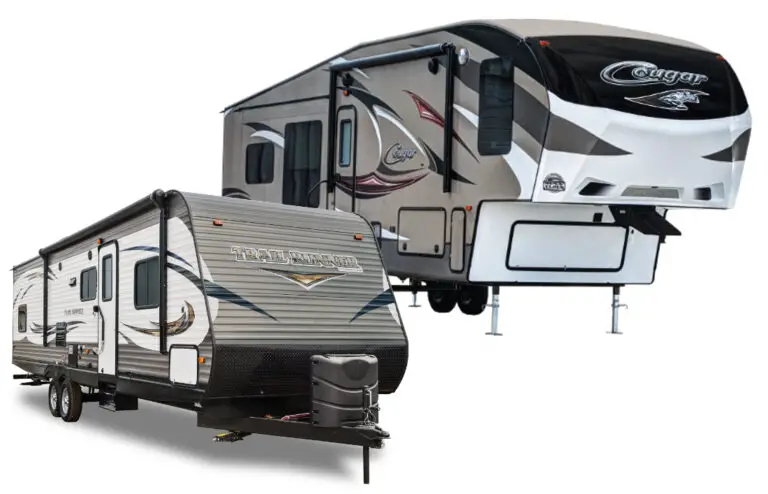RV Awning Not Working
If your RV awning is not working, there could be several possible causes. It could be a power issue, a mechanical problem, or even a damaged control panel.
We will explore the potential reasons for your RV awning malfunction and provide solutions to help you troubleshoot and fix the problem. From checking the power supply and fuse to examining the wiring connections and inspecting the awning fabric, we will cover all the necessary steps to get your RV awning working again.
By following these simple guidelines, you can ensure a smooth camping experience with a fully functioning awning. So let’s dive in and address the issue of your RV awning not working.
Motor Or Power Issues
If your RV awning is not working, it could be due to motor or power issues. One possible cause could be a faulty motor. Inspect the motor connections and make sure they are secure. Another potential problem could be power supply issues. Check the fuse and make sure it is not blown. Additionally, examine the wiring and look for any loose connections. Another reason for awning malfunction could be a malfunctioning switch or control panel. Test the switch by pressing it to see if it engages. If it doesn’t, there may be an issue with the switch itself or the control panel. Inspect the switch and control panel for any signs of damage. Remember to always follow the manufacturer’s instructions when working on your RV awning and consider consulting a professional if you are unsure about any repairs.

Credit: libertydoorandawning.com
Mechanical Problems
Mechanical problems can cause an RV awning to stop working properly. One potential issue could be bent or damaged arms or brackets. If these parts are not aligned correctly or are bent out of shape, it can prevent the awning from extending or retracting smoothly. Another possible problem is a broken roller tube or spring assembly. If these components are damaged, the awning may not be able to roll up or down properly. Additionally, worn-out fabric or track can also cause issues. If the fabric is frayed or torn, or if the track is worn down, it can impede the awning’s movement. Finally, a stuck or jammed mechanism can prevent the awning from functioning as it should. If any of these problems are present, it’s important to address them promptly to ensure the RV awning can be used effectively.
Weather-related Damage
Weather-related damage can often affect your RV awning’s functionality. High winds, for instance, have the potential to cause significant damage. These strong gusts can put excessive pressure on the awning, leading to tears or even complete detachment. Similarly, heavy rain or snow accumulation can add extra weight to the awning, potentially causing it to sag or become damaged. The constant exposure to sunlight can also have a detrimental effect on the awning over time, causing it to fade, deteriorate, or become brittle. Regularly inspecting the awning for any signs of wear and tear and promptly addressing any issues can help prevent further damage and ensure its proper functioning.
Frequently Asked Questions Of Rv Awning Not Working
Why Is My Rv Awning Not Working?
There could be several reasons why your RV awning is not working. It could be due to a blown fuse, a defective motor, or a broken awning arm. Check the fuse first and replace it if necessary. If the motor is the issue, you may need to replace it.
If the awning arm is broken, it will need to be repaired or replaced.
How Do I Fix A Stuck Rv Awning?
To fix a stuck RV awning, you can try a few troubleshooting steps. First, check if the awning is correctly aligned on the track. If not, adjust it until it fits properly. If the fabric is jammed, try lubricating the moving parts or gently tapping them with a mallet to loosen it.
If none of these solutions work, it’s best to consult a professional.
How Do I Maintain My Rv Awning?
Proper maintenance is crucial for the longevity of your RV awning. To maintain it, regularly inspect and clean the fabric, removing any dirt or debris. Lubricate the moving parts with silicone spray to ensure smooth operation. Additionally, always remember to retract the awning during heavy rain, high winds, or when you’re not using it to prevent damage.
Conclusion
Troubleshooting issues with your RV awning can be a frustrating experience. However, by following the steps outlined in this blog post, you can diagnose and potentially fix the problem on your own. Remember to check the power supply, inspect the motor and wiring, and ensure proper tension on the awning fabric.
Regular maintenance and proactive care are vital to keeping your RV awning in optimal working condition. With some patience and know-how, you can enjoy the benefits of a fully functional awning on your next RV adventure. Happy camping!






